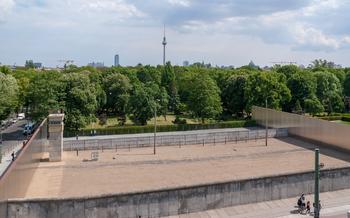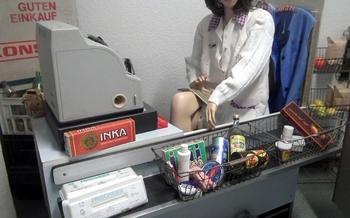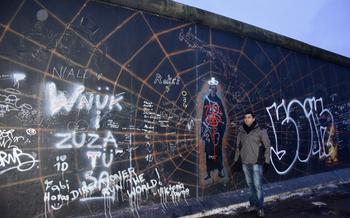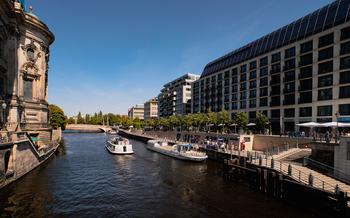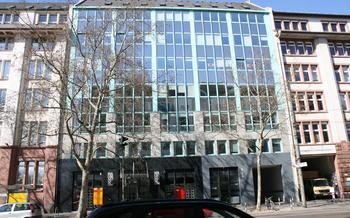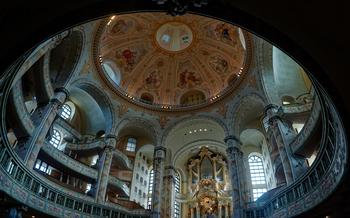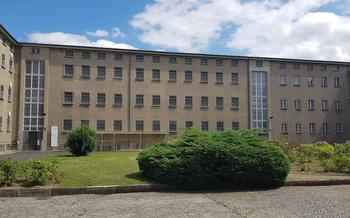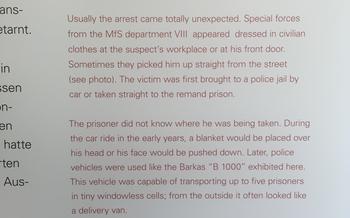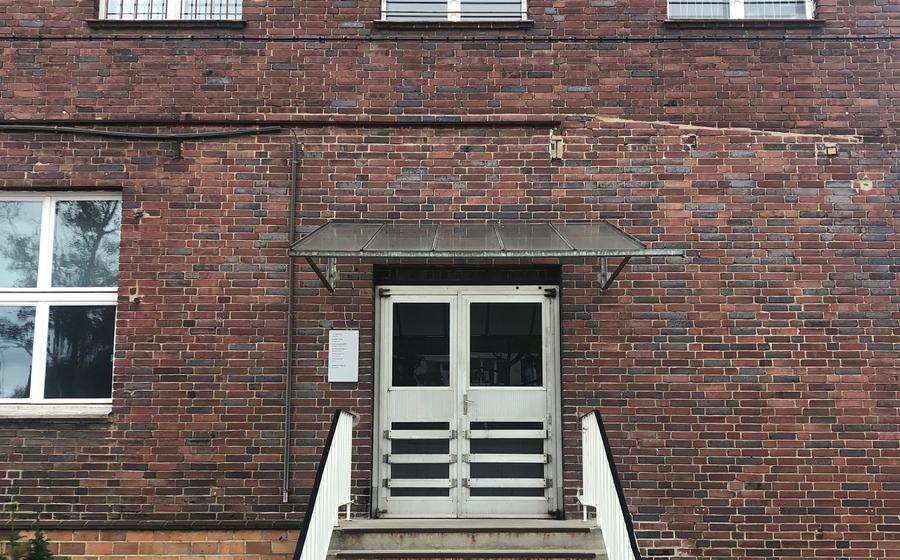
The Berlin Hohenschönhausen Prison
- Visiting the Berlin Hohenschönhausen Prison: Practical Information
- Exploring the Prison Grounds
- The Stasi Archives
- The Stasi Museum
- The Chapel of Reconciliation
- The Hohenschönhausen Memorial: Promoting Remembrance and Education
- Guided Tours of the Berlin Hohenschönhausen Prison
- Exhibitions and Events at the Berlin Hohenschönhausen Prison
- Research and Education at the Berlin Hohenschönhausen Prison
- The Berlin Hohenschönhausen Prison in Popular Culture
- Insider Tip: Hohenschönhausen Prison Tours
Visiting the Berlin Hohenschönhausen Prison: Practical Information
The Berlin Hohenschönhausen Prison is located in the Lichtenberg district of Berlin, approximately 10 kilometers northeast of the city center. It is easily accessible by public transportation, with the nearest tram stop ("Hohenschönhausen, Genslerstraße") just a short walk away. For those arriving by car, there is limited parking available on the prison grounds.
The prison is open to the public from Tuesday to Sunday, with guided tours offered in German and English. Admission fees vary depending on the type of tour and any additional exhibitions or events. Guided tours typically last around 90 minutes and provide visitors with a comprehensive overview of the prison's history and operation. It is advisable to book your tour in advance, especially during peak tourist season, to avoid disappointment.
Exploring the Prison Grounds
The Berlin Hohenschönhausen Prison complex comprises several buildings and structures that played distinct roles during the GDR era. As you wander through the grounds, you'll encounter the following notable features:
-
The Main Building: This imposing structure housed the administrative offices, interrogation rooms, and prison cells. It's where the majority of prisoners were held and subjected to harsh interrogation techniques.
-
The Stasi Headquarters: Located adjacent to the main building, this building served as the headquarters of the Stasi, the East German secret police. It was responsible for coordinating surveillance, repression, and political persecution across the country.
-
The Watchtowers: Scattered around the prison complex, these towers were used by armed guards to monitor the movements of prisoners and prevent escape attempts.
-
The Chapel of Reconciliation: Built in the 1950s, this chapel provided a place of solace and spiritual support for prisoners. It's a symbol of hope and resilience for those who suffered under the GDR regime.
-
The Memorial Wall: This poignant memorial, located near the main entrance, commemorates the victims of political persecution in East Germany. It features the names of those who lost their lives in Hohenschönhausen and other GDR prisons.
The Stasi Archives
The Berlin Hohenschönhausen Prison also houses a vast collection of documents and records related to the Stasi's activities, providing a unique glimpse into the surveillance and repression of East Germans during the GDR era. These archives contain millions of files, including personal records, surveillance reports, and interrogation transcripts, offering researchers and historians a wealth of information for their studies.
The Stasi Archives provide invaluable insights into the inner workings of the Stasi, shedding light on their methods of surveillance, their techniques of interrogation, and their strategies for maintaining control over the population. Researchers can explore the archives to uncover stories of individual persecution, resistance, and resilience, piecing together a comprehensive understanding of the human toll of the GDR's political repression.
Access to the Stasi Archives is granted to researchers upon request, allowing them to conduct in-depth investigations into specific topics or individuals. Through these archives, the Berlin Hohenschönhausen Prison serves as a vital resource for scholars seeking to understand the complex history of the GDR and the impact of the Stasi on the lives of its citizens.
The Stasi Museum
The Stasi Museum, housed within the Hohenschönhausen Prison complex, offers a comprehensive overview of the history and structure of the East German secret police. Through interactive displays and educational resources, visitors can gain insights into the Stasi's methods of surveillance, repression, and control. Personal stories and testimonies from former Stasi victims add a human dimension to the museum's exhibits, highlighting the devastating impact of the Stasi's activities on individuals and families. The museum serves as a powerful reminder of the dangers of unchecked power and the importance of upholding human rights and freedoms.
The Chapel of Reconciliation
The Chapel of Reconciliation stands as a symbol of hope and resilience within the Berlin Hohenschönhausen Prison. Constructed in 1950, it was initially intended to provide spiritual comfort to prison guards and their families. Yet, in a twist of fate, it became a sanctuary for imprisoned individuals, offering a glimmer of solace and strength amidst their suffering. Secretly, they would gather in the chapel to find solace and draw strength from their shared experiences.
After the fall of the Berlin Wall, the chapel underwent a remarkable transformation. It was renovated and reopened in 1992 as a place of remembrance and reflection, dedicated to honoring the victims of the GDR regime. Its simple yet poignant interior features a cross made from barbed wire, a reminder of the harsh conditions endured by those held captive within these walls. The chapel has since become a symbol of reconciliation and healing, a place where former prisoners and their families can come to terms with the past and find peace.
Visitors to the chapel are invited to pause and reflect on the stories of those who suffered under the oppressive regime. The chapel's serene atmosphere encourages contemplation and remembrance, serving as a powerful reminder of the importance of human rights and the indomitable spirit of those who dared to resist tyranny.
The Hohenschönhausen Memorial: Promoting Remembrance and Education
The Hohenschönhausen Memorial is dedicated to preserving the memory of the victims of political repression in the GDR and promoting education about the Stasi's crimes. Through its mission and activities, the memorial plays a vital role in fostering awareness and remembrance of this dark chapter in Germany's history.
The memorial offers a range of educational programs and workshops designed to engage visitors of all ages, particularly students and educators. These programs aim to provide a deeper understanding of the GDR's political system, the Stasi's methods of surveillance and repression, and the impact of these actions on individual lives.
By promoting critical thinking and historical understanding, the Hohenschönhausen Memorial contributes to a broader societal dialogue about the legacy of the GDR and the importance of human rights and democracy. It serves as a reminder of the dangers of authoritarian regimes and the need for vigilance against any form of political oppression.
The memorial's work is essential in ensuring that the stories of those who suffered under the Stasi are not forgotten and that future generations can learn from the mistakes of the past.
Guided Tours of the Berlin Hohenschönhausen Prison
The Berlin Hohenschönhausen Prison offers guided tours that provide visitors with an in-depth understanding of the prison's history, its role in the GDR's political repression, and the experiences of former prisoners. These tours are led by professional guides who are knowledgeable about the prison's history and are able to answer visitors' questions.
There are different types of tours available, catering to various interests and time constraints. Standard tours typically last for 90 minutes and cover the main areas of the prison, including the prison cells, interrogation rooms, and the Stasi archives. Longer tours, lasting for up to three hours, offer a more comprehensive exploration of the prison grounds and include visits to the prison hospital, the chapel, and the Stasi museum.
Guided tours are available in German, English, and other languages upon request. Visitors can book their tours in advance online or by phone to secure their spot. It is advisable to book in advance, especially during peak tourist season, to avoid disappointment.
During the tours, guides share stories and anecdotes about former prisoners, providing visitors with a glimpse into the lives of those who were incarcerated within these walls. Visitors will also have the opportunity to ask questions and engage in discussions with the guides, making the experience both informative and interactive.
Whether you are a history buff, a student, or simply someone who wants to learn more about the GDR's political repression, a guided tour of the Berlin Hohenschönhausen Prison is a must-do. It is an opportunity to gain a deeper understanding of this dark chapter in German history and to honor the memory of those who suffered under the Stasi regime.
Exhibitions and Events at the Berlin Hohenschönhausen Prison
Beyond the permanent exhibits, the Berlin Hohenschönhausen Prison hosts a variety of temporary exhibitions and events throughout the year. These exhibitions often focus on specific aspects of the prison's history, the GDR's political repression, or contemporary issues related to human rights and freedom.
Visitors can expect to encounter thought-provoking displays, interactive installations, and multimedia presentations that shed light on various topics. Past exhibitions have explored themes such as the role of women in the resistance against the GDR regime, the Stasi's surveillance methods, and the experiences of former political prisoners.
In addition to exhibitions, the memorial organizes cultural events, workshops, and lectures that delve deeper into the history and legacy of the prison. These events often feature guest speakers, former prisoners, historians, and experts who share their insights and personal experiences.
These exhibitions and events provide an excellent opportunity for visitors to engage with the history of the Berlin Hohenschönhausen Prison, learn more about the GDR's oppressive regime, and reflect on the importance of human rights and freedom in contemporary society.
Research and Education at the Berlin Hohenschönhausen Prison
The Berlin Hohenschönhausen Prison is a vital site for research and education on the GDR's political repression and the Stasi's surveillance and interrogation practices. The Stasi archives, housed within the prison grounds, contain an extensive collection of documents and records that provide invaluable insights into the inner workings of the East German secret police. Researchers from around the world visit the archives to study these documents and conduct research on topics related to the GDR's political history.
The memorial also offers educational programs for students and educators, focusing on the history of the prison and the Stasi. These programs aim to promote critical thinking and historical understanding among younger generations. Workshops, seminars, and guided tours are tailored to different age groups and educational levels, providing participants with a deeper understanding of the GDR's repressive regime and its impact on individuals and society.
Through its research and educational initiatives, the Berlin Hohenschönhausen Prison serves as a platform for preserving the memory of the victims of political persecution and promoting a greater understanding of this dark chapter in German history.
The Berlin Hohenschönhausen Prison in Popular Culture
The Berlin Hohenschönhausen Prison has been a prominent subject of artistic and cultural works, leaving a lasting impact on society's understanding of the GDR's political repression. Several films, books, and documentaries have explored the prison's history and the stories of its former inmates.
One notable film is "The Lives of Others" (2006), which depicts the Stasi's surveillance and infiltration of East German society, with scenes shot within the actual prison walls. Other films, such as "Barbara" (2012) and "The Tunnel" (2001), also feature the prison as a backdrop, shedding light on the experiences of political prisoners and their struggle for freedom.
In literature, books like "The Spy Who Came In from the Cold" by John le Carré and "Stasiland" by Anna Funder have contributed to the public's knowledge of the prison and the Stasi's operations. These works provide a powerful and deeply personal account of the human toll of political oppression.
The prison's cultural significance extends beyond films and books. It has been featured in documentaries, television shows, and even video games, serving as a reminder of the dark history of the GDR and the resilience of those who resisted the regime.
Through these various artistic representations, the Berlin Hohenschönhausen Prison has become a symbol of remembrance and a powerful tool for raising awareness about the GDR's political repression. It continues to inspire creative works that explore the complexities of history and the human spirit's capacity for resistance and resilience.
Insider Tip: Hohenschönhausen Prison Tours
To make the most of your visit to the Berlin Hohenschönhausen Prison, consider the following insider tips:
-
Advance Booking Recommended: Guided tours of the prison are highly recommended to gain a deeper understanding of its history and significance. Advance booking is essential to secure your spot, especially during peak tourist seasons.
-
Allow Ample Time: Set aside at least two to three hours to thoroughly explore the prison grounds, including the outdoor areas, the prison cells, the interrogation rooms, and the Stasi Museum. This will allow you to fully immerse yourself in the site's history.
-
Combine with Nearby Attractions: The Berlin Hohenschönhausen Prison is located in the Lichtenberg district, which offers several other historical and cultural attractions. Consider combining your visit with stops at the Stasi Museum, the Lichtenberg Town Hall, or the nearby Tierpark Berlin zoo for a comprehensive exploration of the area's rich history.
